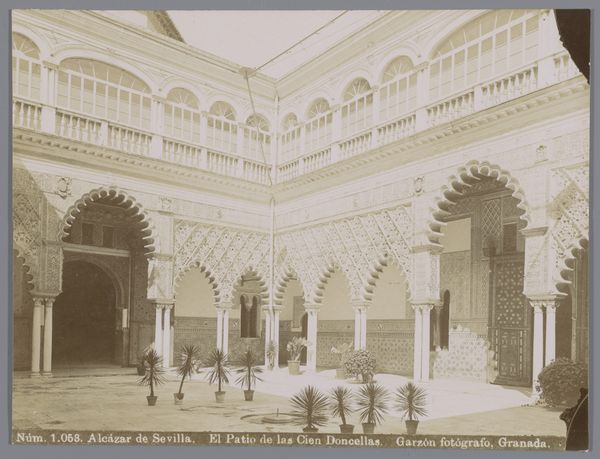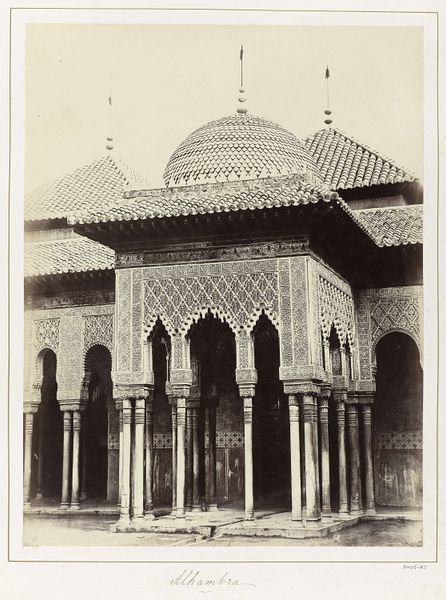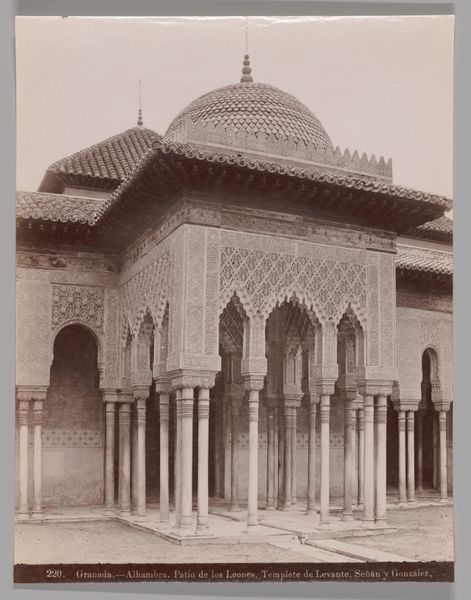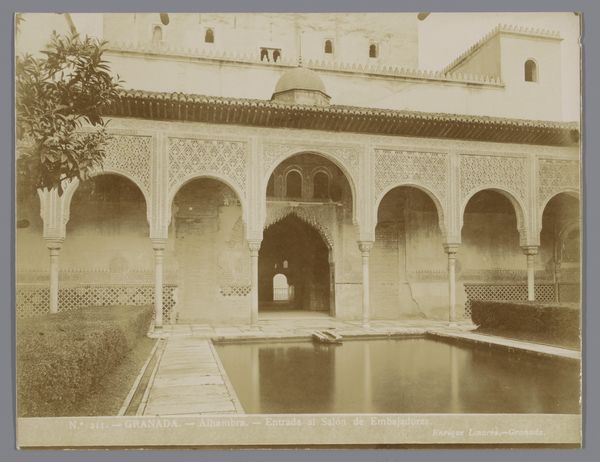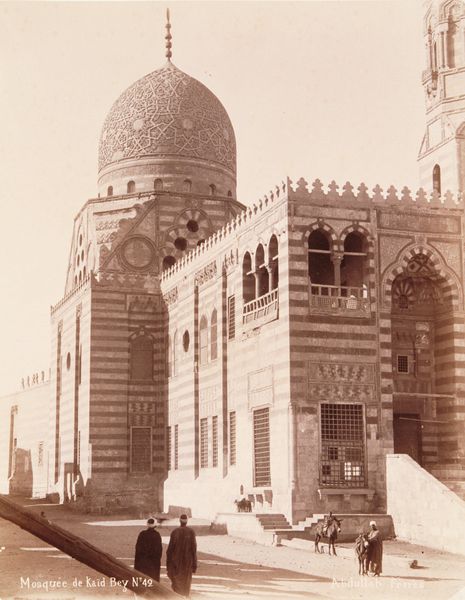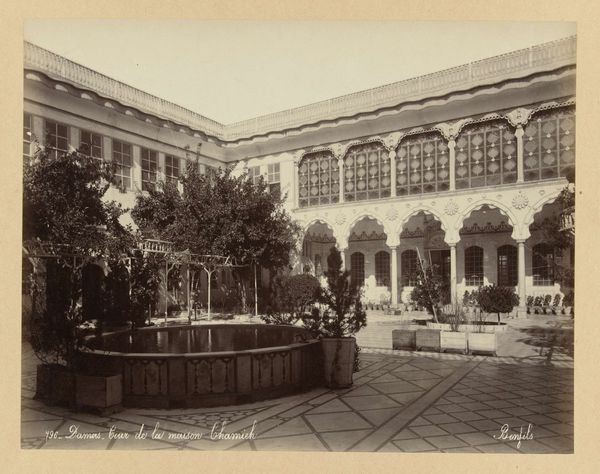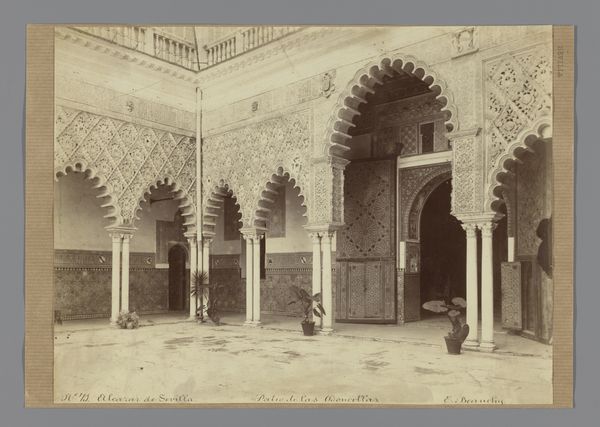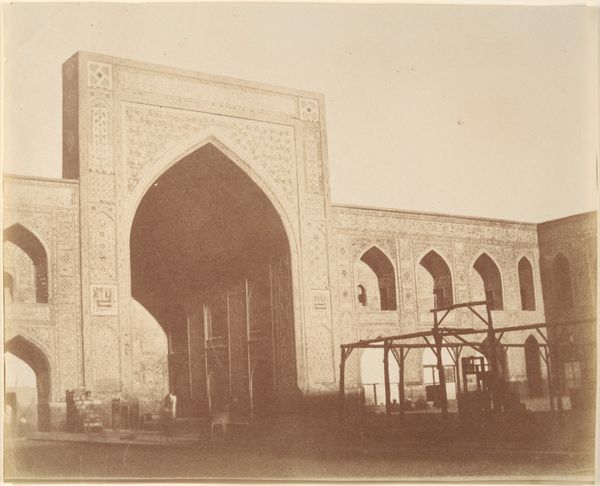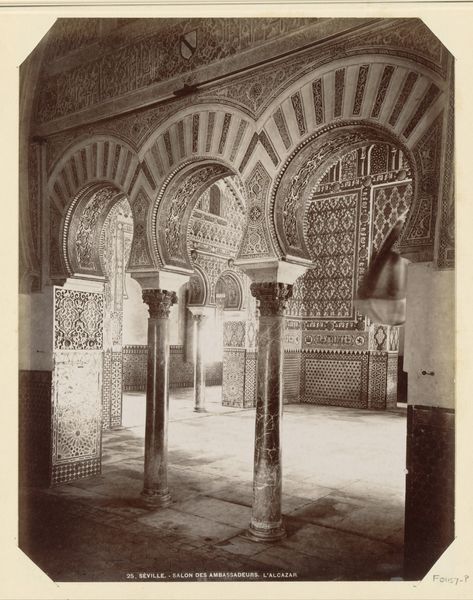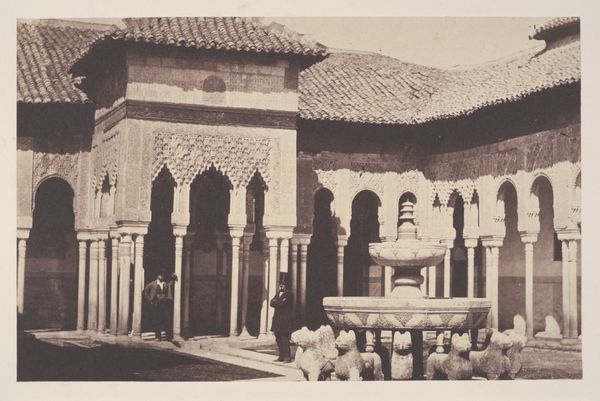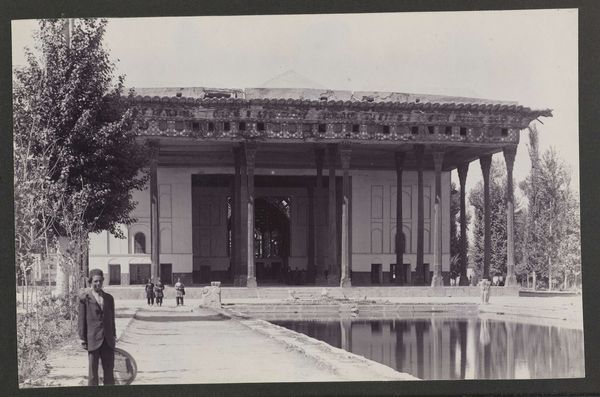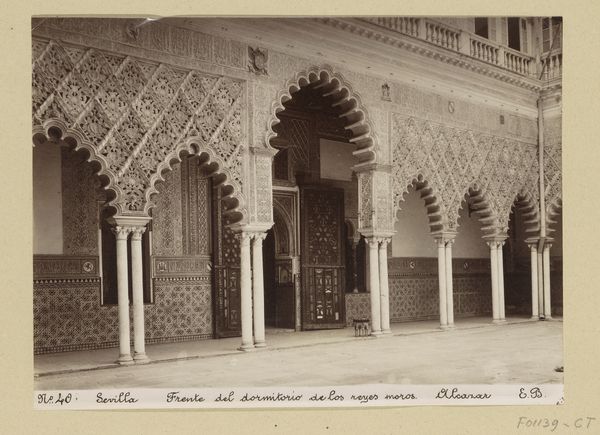
photography, albumen-print
#
landscape
#
historic architecture
#
photography
#
historical photography
#
islamic-art
#
albumen-print
Dimensions: 20.0 x 26.7 cm (7 7/8 x 10 1/2 in.)
Copyright: Public Domain
Curator: This is an albumen print dating from the 1870s, titled "Palais de Gezyret, Pavillon Exterieur" by J. Pascal Sébah. Editor: My first impression? A sense of serene opulence frozen in time. The ornate architecture contrasting against what seems like a very staged and static foreground creates a peculiar distance. Curator: Indeed. Sébah was a master of architectural photography in the Ottoman Empire, and his work often served as both documentation and promotion of modernization efforts. This pavilion reflects an interesting chapter when European influences started blending with Islamic artistic traditions. Editor: Tell me more. I’m intrigued by the seemingly 'exotic' palace and the two gentlemen positioned almost as props. Who were the intended viewers of this image, and what narrative did Sébah want to construct about modernization? Curator: The geometric patterns are the key. Their intricate repetitions speak volumes about Islamic artistic traditions which have a heavy influence on architecture throughout the Middle East. When framed within this European medium, these patterns function as cross-cultural emblems for continuity between modern aspirations and inherited cultural memory. Editor: But continuity for whom? The photographic medium itself suggests a Western gaze. Were images like this designed for local consumption, or aimed toward a European audience, perhaps fueling orientalist fantasies? The two gentlemen feel conspicuously placed, mediating between cultures perhaps, symbols of progress and civilization within a landscape still imbued with ancient tradition. Curator: It is true that the power dynamics within the image is quite telling. Yet, it is vital not to flatten these images into pure representations of domination. Many local elites actively engaged in projects of modernization and sought images of themselves as active agents of historical change. Editor: I suppose my own interpretive biases are being revealed as well. It’s hard to shake the historical context and not view the figures as somewhat subjugated, despite the best intentions of those portrayed or the photographer himself. Curator: Absolutely, that tension is precisely what makes this image compelling, a document where different meanings contend. Editor: It makes one think about whose story is told through historical photographs. It has given me a lot to think about. Curator: Likewise, revisiting such an enduring cross-section in the intersection of symbols and context brings a great deal of fresh perspectives.
Comments
No comments
Be the first to comment and join the conversation on the ultimate creative platform.
